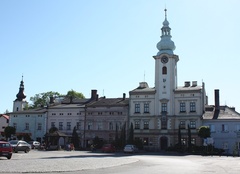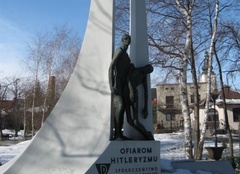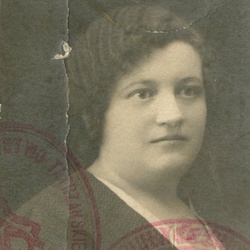Strumien
Pronounced “Stroo-mee-eñ “ (Czech: Strumeň, German: Schwarzwasser)
Traveling Jewish merchants passed through Strumień as early as the 1550s, however a law required Jewish salesmen to pay a toll for entering the village. In 1582 Jews were banned from entering not only Strumień but the entire surrounding region of Cieszyn (Teschen) Silesia.
In 1653, Strumień came under the rule of the Austrian monarchy. Jews were not legally permitted to live in Silesia until King Charles VI passed the Tolerance Edict of 1713. Throughout the next several decades, Jewish craftsmen and merchants established a crucial role in the local economy. Local noblemen relied on their services and successfully protested when Empress Maria Theresa attempted to again expel Jews from the region in 1745.
Little else is known about the Jewish life of the community until World War I (1914-1918), when the Jewish population of Strumień began to grow. Many new arrivals came from the Soviet Union, Austria or other parts of central Europe seeking better opportunities for themselves and their families.
After World War I, Strumień became part of the newly independent country of Poland. In the 1920s the village suffered as one of the poorest communities of the region. During this time the majority of Jewish families earned a living as the owners of local shops. When buyers were unable to pay in cash, Jewish shop owners would often accept trades for items such as cheese, butter or poultry. Two Jewish residents also served as the town’s doctor and pharmacist.
The small Jewish community of Strumień could not escape the growing antisemitism that engulfed Europe in the 1930s. Violence in the region escalated after the death of former Polish Prime Minister Józef Piłsudski in 1935 and on September 1, 1939, Strumień was occupied by the German army. Within weeks, Jewish-owned businesses were confiscated and Jews were required to wear an armband with a blue Star of David on their sleeves.
On the night of September 18, gun-wielding soldiers forced all the town’s Jewish residents into the main square. Barefoot and without any possessions, they were marched to the village of Zabłocie about one and a half miles away. From there they were confined to a ghetto before being sent to concentration and labor camps. Many died at the killing center of Auschwitz.
After the war, the few Jewish survivors who returned to Strumień found their homes and businesses destroyed. With nothing left for them in the village, most eventually emigrated to other countries.
Strumien: Photographs & Artifacts
-
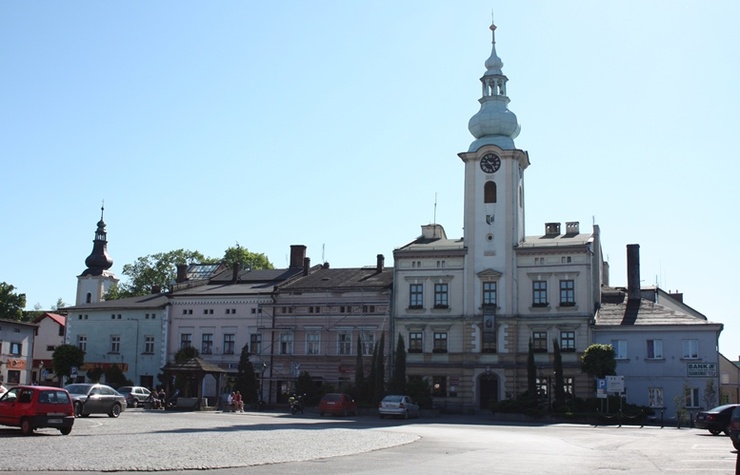 The market square of Strumień, June 2010. Wikimedia Commons / Ludwig Schneider / CC-BY-SA-3.0
The market square of Strumień, June 2010. Wikimedia Commons / Ludwig Schneider / CC-BY-SA-3.0 -
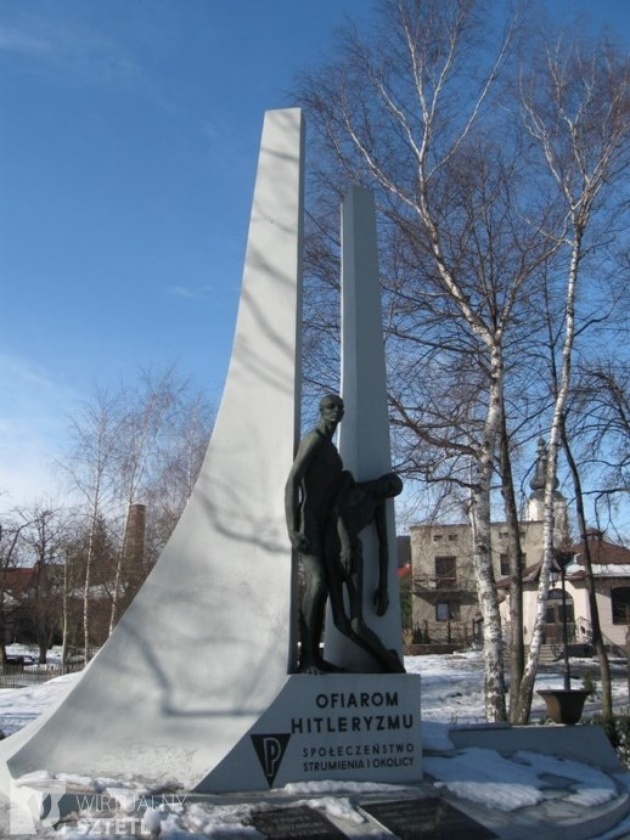 Memorial to the victims of Nazism in Strumień. This photo was taken in February 2010. Credit: sztetl.org.pl/Małgorzata Płoszaj
Memorial to the victims of Nazism in Strumień. This photo was taken in February 2010. Credit: sztetl.org.pl/Małgorzata Płoszaj -
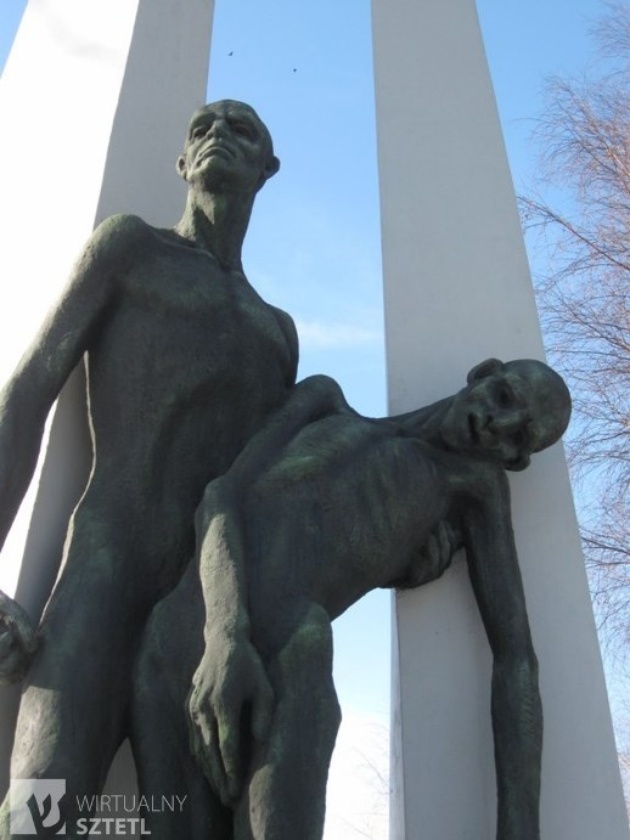 A closer view of the memorial to the victims of Nazism in Strumień, February 2010. Credit: sztetl.org.pl/Małgorzata Płoszaj
A closer view of the memorial to the victims of Nazism in Strumień, February 2010. Credit: sztetl.org.pl/Małgorzata Płoszaj
